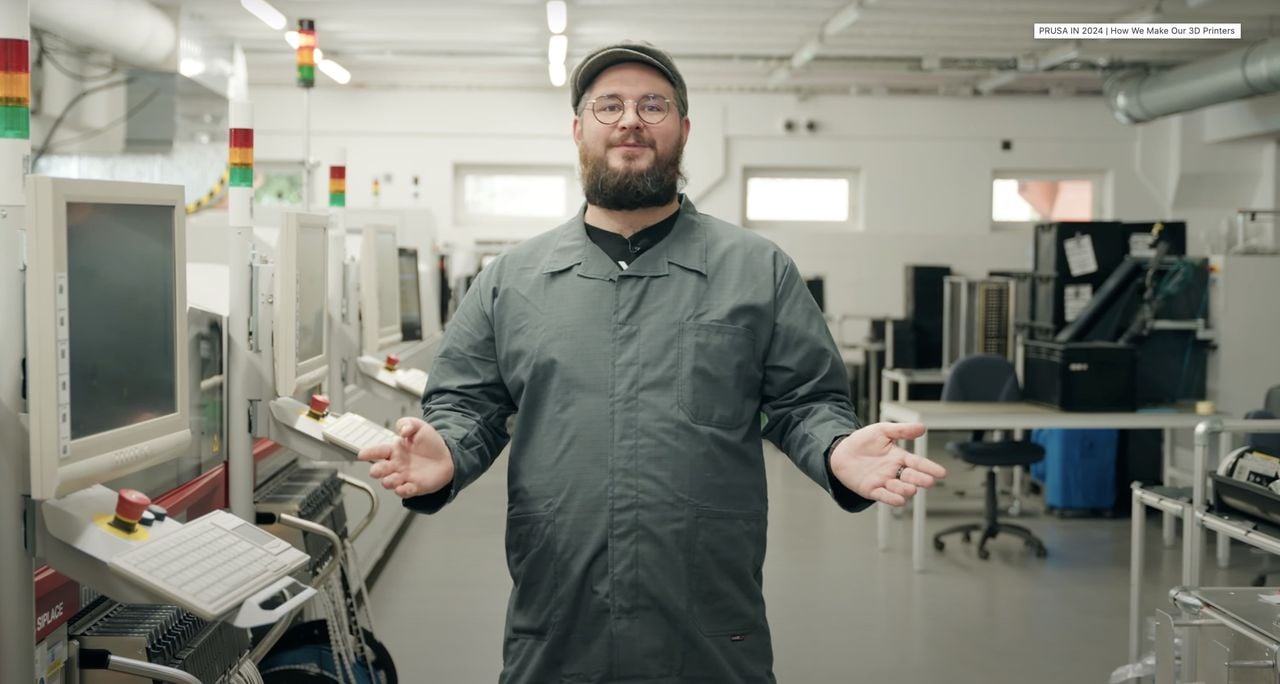
Prusa Research posted a long video and post about their current status. Let’s take a look.
The Czech company has long been very transparent on their activities and this most recent release continues that practice. They are quite unlike most 3D print companies, which tend to be very secretive.
The post by CEO Josef Prusa comes after a year of big changes for the company. They faced their first significant competition from Bambu Lab, and reacted with the release of their first new flagship device, the MK4, after five years.
What can we learn by reading through the release?
They say that the new MK4 has become their fastest-selling machine, ever. That’s quite a statement from a company that has sold well over 100,000 units so far. But selling rates often are constrained by manufacturing capacity, so it may be that they simply have more manufacturing capability.
However, they also say that they’ve been building up that capacity, which is quite challenging to do in Europe. Prusa Research’s major competitors are mostly based in China, where manufacturing can be far less expensive. However, it seems that Prusa Research has been able to meet the capacity they need, saying:
“In the second half of 2023, we bumped up the production capacity to nearly 200%. This allows us to push the lead times as low as possible. We’re very close to the point where we will have MK4 in stock with no lead time at all.”
That’s good news for the company, and also suggests that in spite of competition, they are still maxing out their manufacturing capacity. It would be not so good news if they had idle capacity, but that’s not the case here. It also appears they have caught up with the initial orders for their larger-format XL device, and now offer upgrade kits in their store immediately.
Unlike most 3D printer manufacturers, Prusa Research publishes an up to date shipping schedule, where you can determine when a machine order is likely to be delivered.
As of this writing, it seems that the wait time for assembled MK4’s is about a week and that’s perhaps the lowest wait we’ve seen at the company. In the past there were times when weeks or even months of waiting was required for earlier models. The wait time for MK4 kits is a bit longer for some reason. Perhaps the company is prioritizing the more profitable assembled versions?
Unsurprisingly, the MK3S+ units are in stock now, as it’s likely most of the demand has shifted to the newer MK4.
An interesting sequence from Prusa relates to their relationship with customers:
“Many of you have “grown up” with us, and your first printer might have been the MK1 or MK2. We probably even met in person at various events, or maybe I personally helped you build a printer ten years ago. Since then, however, a lot of water has flowed under the bridge; the market has changed, and so has the mood in 3D printing communities. We’re evolving too, constantly seeking the right balance between remaining that enthusiastic group of garage-born inventors, while also being capable of shipping over a hundred thousand 3D printers a year.”
This illustrates a growing disconnect between many of their customers and the current business situation. It is actually extremely challenging to build quality products at scale and at a reasonable price, and Prusa Research has undertaken huge efforts to achieve that. However, most of their customers do not understand the challenges and Prusa Research is trying to explain to them why things happen the way they do.
This is an interesting development, because such challenges will only increase as the company grows, possibly stretching their relationship goals.
Among the changes they’ve made to meet the manufacturing challenge is the production of their own circuit boards. This releases their dependence on sometimes-erratic third party suppliers.
This is all exacerbated by the companies increasing number of models, combined with their practice of providing upgrades to older systems. Many companies abandon older products because it is simply too hard and expensive to maintain them. However, Prusa Research has a principle to do so, in spite of the effort and expense.
There’s a very interesting passage from Prusa:
“I’m trying to state the facts with as little emotion as possible. Simply to give you a bit of background on what it means to produce something in the EU. It’s obvious that when you’re choosing between various brands, the questions of ‘morality’ or ‘fate of the industry’ are definitely not anywhere near the top of the priority list. And that’s ok. But as perhaps the last western manufacturer of desktop 3D printers, we have to fight back. Because we believe that in the long run, our approach will pay off for both us and you.”
Reading between the lines, it seems that the company is feeling pressure both from competition and from their customer base that might not quite understand what the company must do.
Prusa reacted to comments about the company “not innovating” with evidence from their latest equipment, along with developments in materials and software. Those are indeed quite innovative, but I suspect the customer base is concerned about the rather long period between the release of the MK3 and the MK4.
Finally, Prusa indicates that they take up about ten percent of the desktop 3D printer market, so they cannot be considered dominant. That’s true, and the rest of the market is divided among quite a number of players. Competition is indeed good.
The update from Prusa was quite interesting, and very different from prior posts. It seems the company is facing some pressures and felt the need to set the record straight.
But will the customer base understand and accept the explanations?
Via Prusa Research
